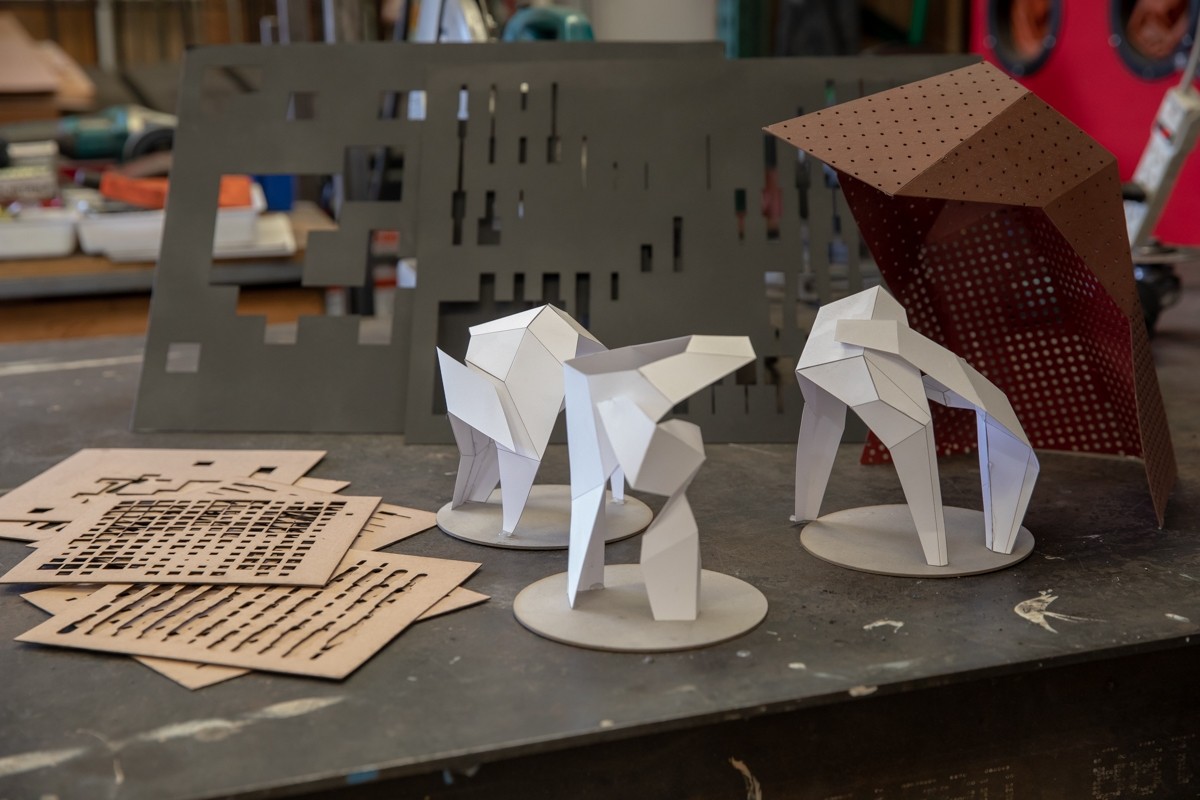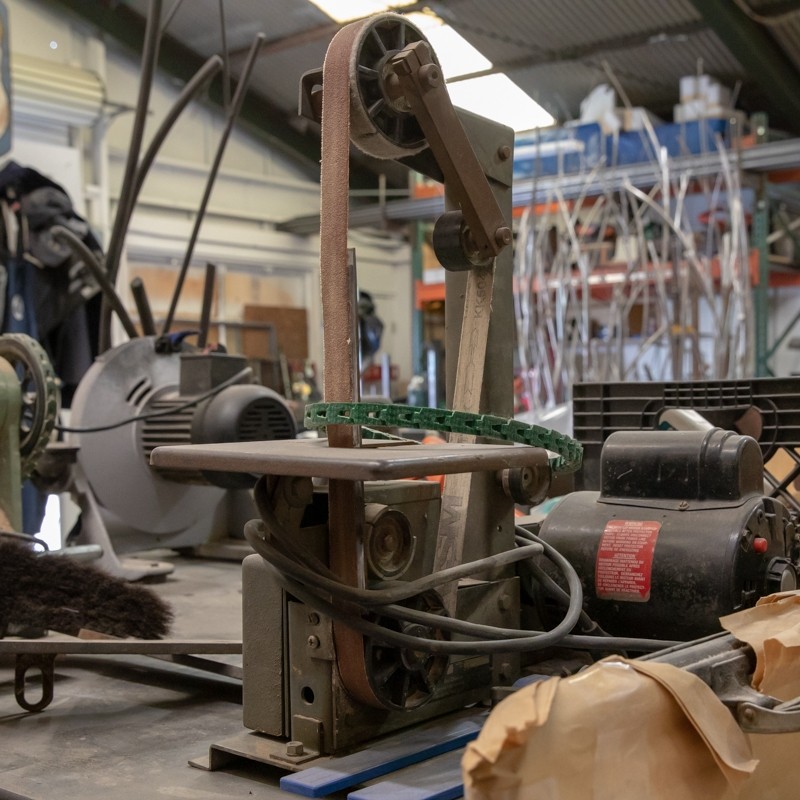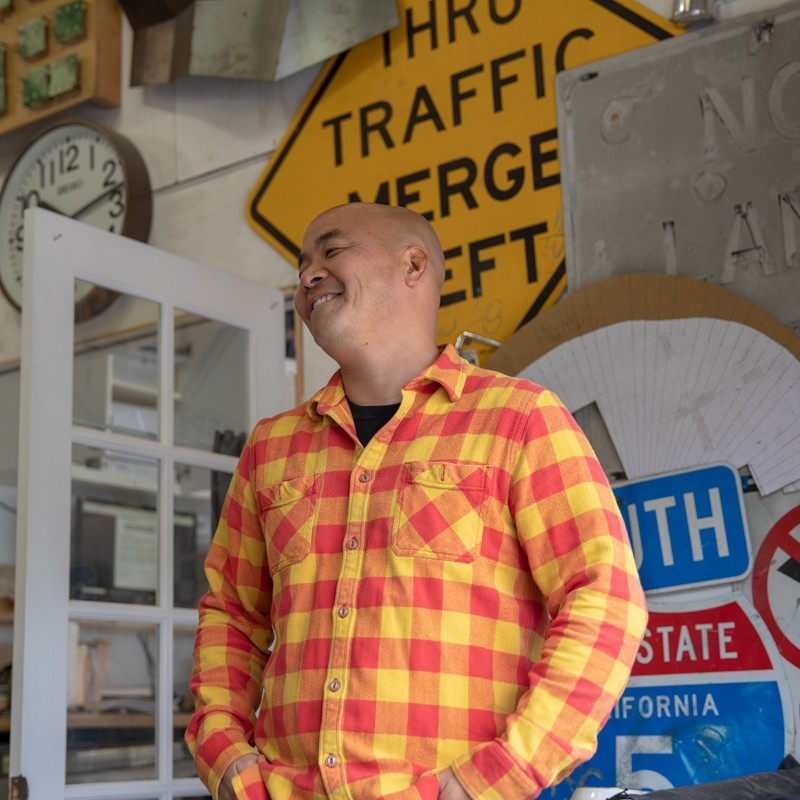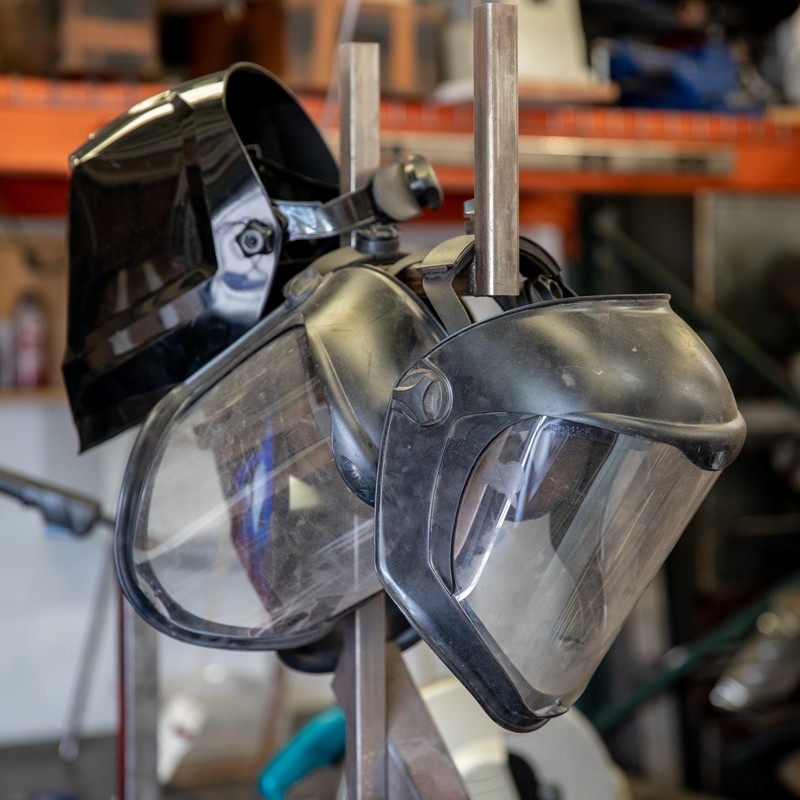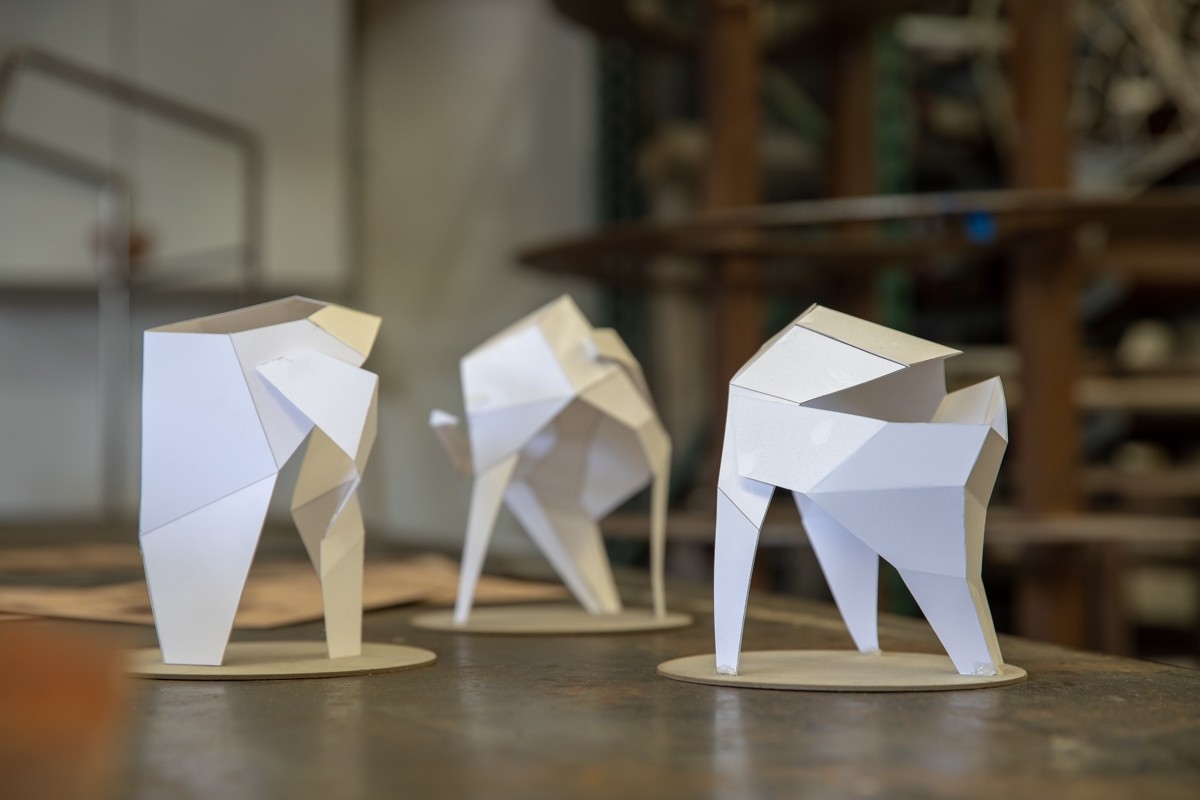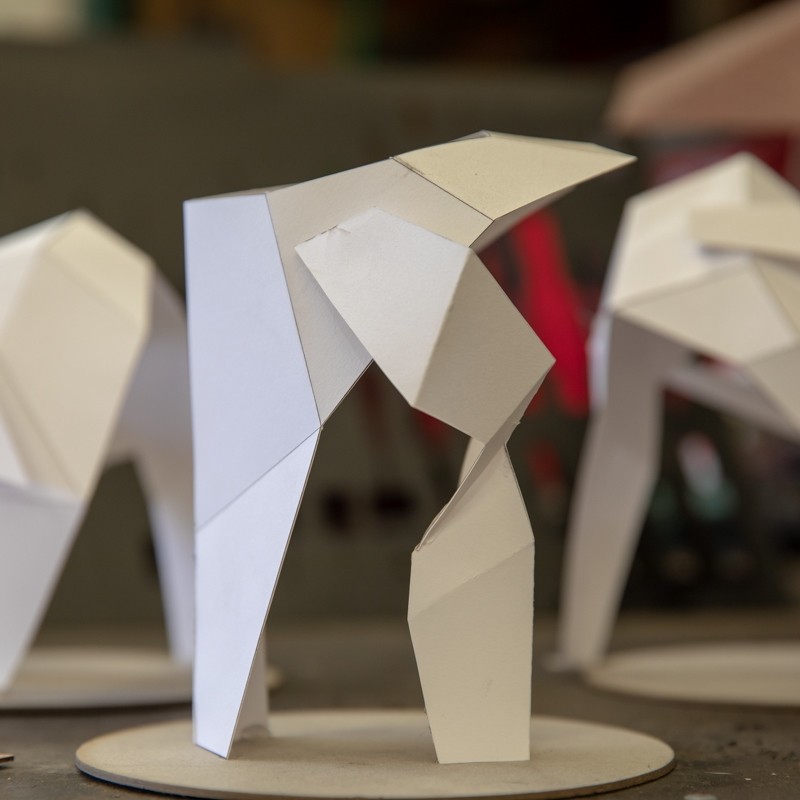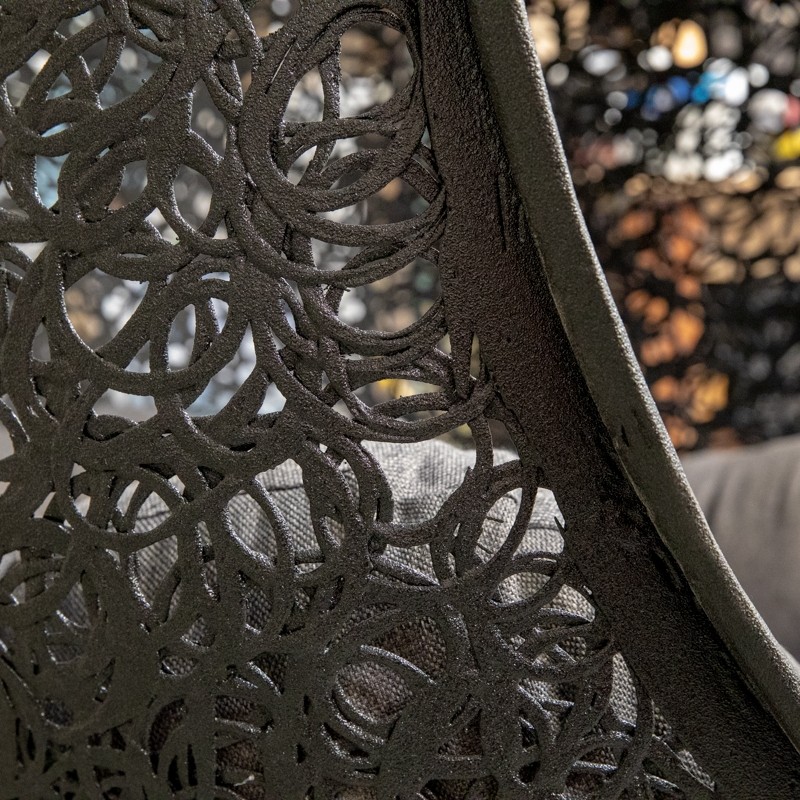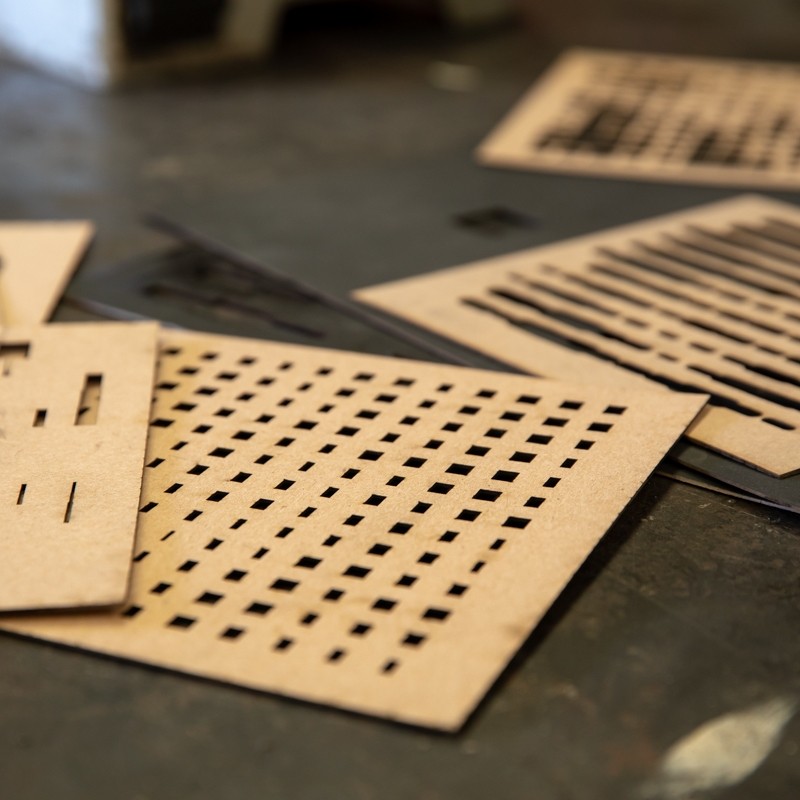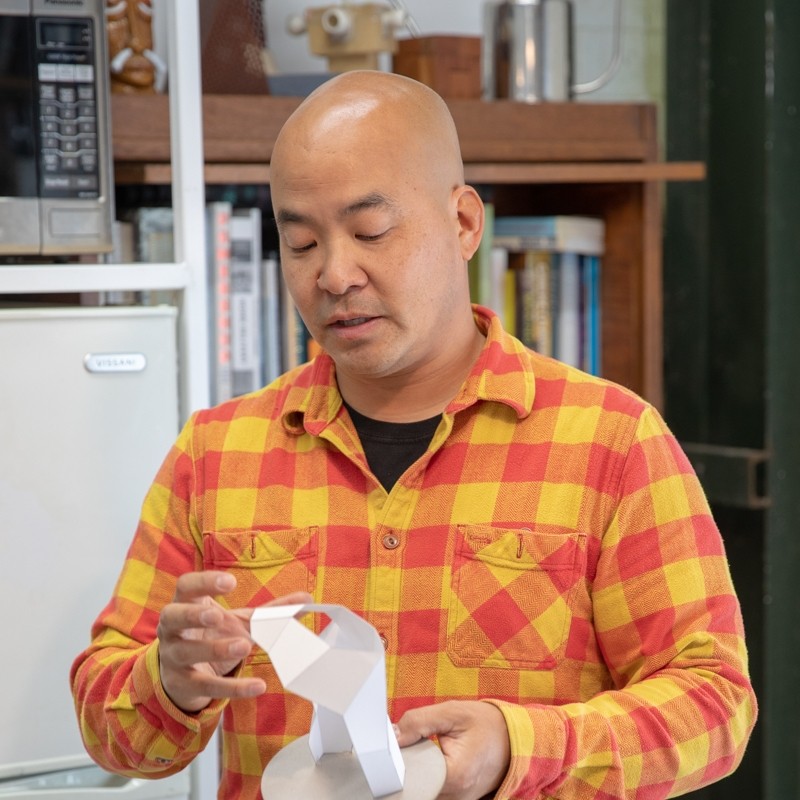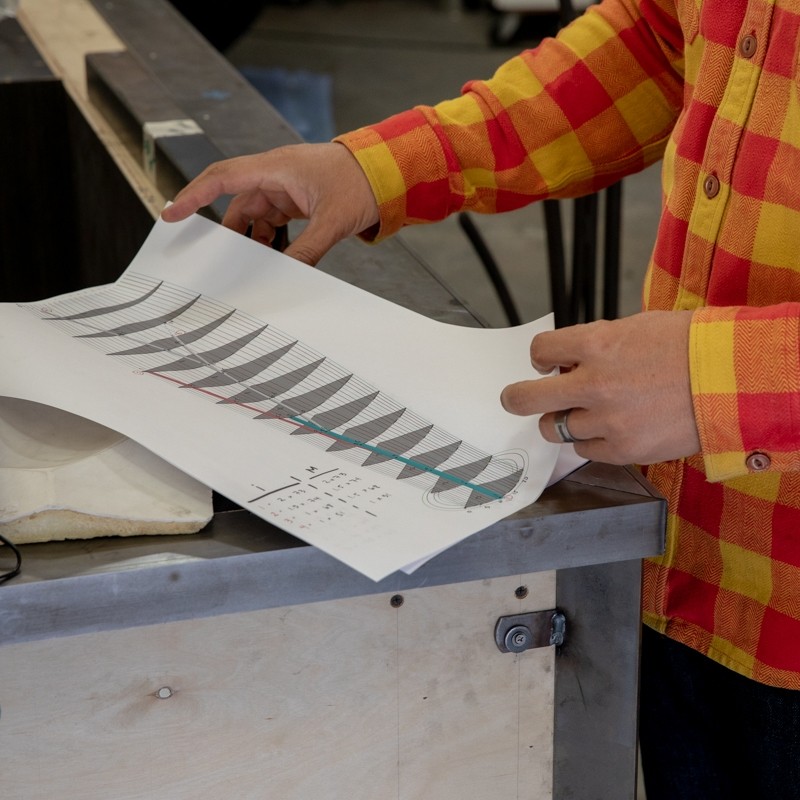Iwasaki’s artwork can be found across town, from Terminal 1 at San Diego Airport to the iconic facade of Bali Hai. His architectural experience includes work in New York, Los Angeles and San Diego firms, and spans residential, office, restaurant, retail and gallery work. He attended California State Polytechnic University in Pomona California, spent a year at the Kyushu Institute of Design in Fukuoka, Japan and received his Masters in Architecture from the Harvard Graduate School of Design in Cambridge, Massachusetts.
Describe your “Installations at the Station” project.
Three separate spaces called Facetime will be built for both interaction and contemplation, hinting at communication via the sightlines created by their placement and perforation, while providing temporary shelter. The Corten Steel will patina over time further allowing for a visible connection to natural forces and site context. Liberty Station has a very formal organization. They’re military barracks, but even the landscape, the urban plan, is formal. So a goal is to break things up to make the spaces more distinct, so visitors can find their way around. There’s no place to gather right now, so there will be pods for small groups in a distinct space. Open-ended geometries are more attuned to the sun and wind direction, and other contexts.
What excites you about creating a new site-specific piece for ARTS DISTRICT Liberty Station?
Liberty Station is a unique space in the city of San Diego, a true melding of various uses in one location. The project is an amazing opportunity to contribute to the growing Arts District at Liberty Station. There is great potential in developing it into a world-class arts destination.
Will there be prototyping workshops?
Yes. It’s a fun thing to reveal the process to the public, fixing small-scale pieces into geometries to see what works. It’s like kids playing with cardboard houses; they understand basic principles: exclusion, inclusion, views and hiding. What we’re doing is not so different but more formalized with different materials. We’re building models and performing tests on the laser cutter (shares the patterns). The more dense the pattern, the more time it spends on the laser cutter.
